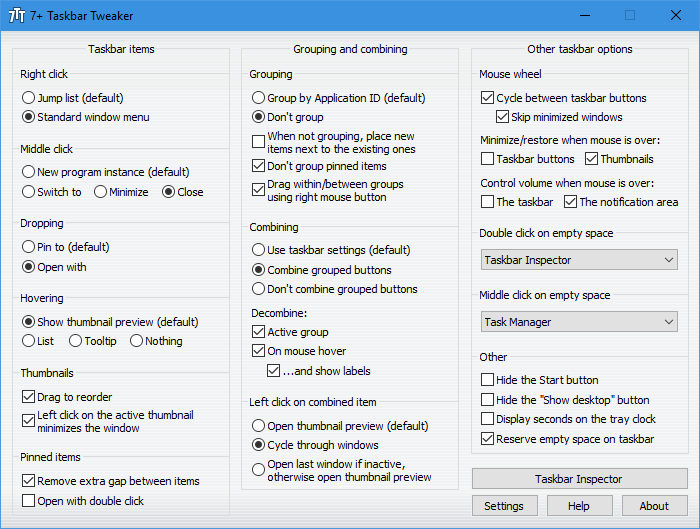
Know I have done a good amount of research and heard all different angles. I am going to test some of these things myself and time it real time with a stop watch! This tweak is mostly aimed at system performance for gaming but would like to hear the pro's and cons.
Tweaks & Software's to Speed Up Windows 7 and get. 64 bit and 32 bit windows 7. IconTweaker enables you to return your icons to the previous state. The app gives you an easy access to hidden Windows settings that let you remove an arrow and. Oct 20, 2017 7 Taskbar Tweaker is a handy Windows 7 utility that allows you to customize the. Windows 7 • Windows 7 64 bit • Windows 8 • Windows 8 64 bit.
Download Talking Tom Jar Touch. Win 7 64x I have a Core i5 750 overclocked to 4Ghz and I have 8GB DDR3 1600, GTX 570 and a Velociraptor 300GB 10k RPM drive. So my system moves fast as it is.
I was wondering if someone from Toms Hardware could do a definitve test showing the performance ganes and ideal setups. System ram (hardware) is much faster then a pagefile on any hard drive. Some programs want to have a pagefile but most seem to be like Adobe Photoshop. I have seen people say over 4GB disable page file. Set page file to 512MB with over 4GB of RAM.
Setup pagefile on 2nd hard drive. Leave it to system managed on Win 7 because it handles it differently then WinXP used to and any tweaks make no difference. So again I can do my own personal testing but I think it would be great to have a full review to answer all these questions and put it to bed so to speak. I honestly think it would be very benificial to do an article then have information just posted in the forums.
What do you think guys? Well, the answer is always going to be 'It depends.'
It depends on which applications you are running and how much memory they use in the aggregate. Some even create their own scratch files to avoid paging system memory; I have mixed feelings about that approach. We-all can't even agree on whether Win7 should have a pagefile, and whether it should be on your SSD or not. I personally have a pagefile on my SSD, but that's a personal choice. What I would do (did do at work) is run a full workload with the Task Manager running. If you see pagefile use, then you need your pagefile. My current PF usage is 1 GB, with the Commit Charge peak value a little over.
Since my memory is 2 GB (!), I'm not paging at the moment. The reason that there isn't a 'full review' is that the answer is so dependent on what apps you are running. If you've done a good amount of research and read various opinions on the subject here in the forums, you have as much information as you are going to get for the general answer. ^+1 There isn't any question that having enough RAM to be able to eliminate the pagefile altogether is your very best performance option. No pagefile, regardless of what kind of device it's on, is as fast as simply having the program resident in memory.
This is because any page that isn't in memory incurs a pagefault interrupt followed by thousands of instructions to find a free memory page, 'read' the required page back into memory, and then update the memory mapping unit. When the choice is between simply executing a RAM-resident instruction vs. Executing thousands of OS instructions to do the reading/remapping, there really isn't any question as to which is faster.
There aren't any modern programs I'm aware of that require a pagefile to be present. Introduction To Computers By Peter Norton 7th Edition Free Download. The last version of Photoshop I used that required a pagefile was Photoshop 6. I've been running my system without a pagefile for two years now and I've never encountered any issues whatsoever.
But whether or not you CAN disable the pagefile depends entirely on what kind of programs you run, how many of them you run at the same time, and what kind of documents/files you open with those programs. Everyone is different - it's not possible (and is indeed dangerous) to give a general rule, because it inevitably won't work for some people. What you need to do is to load up as many programs as you ever run at once, use them to open up as many of the biggest documents / files / whatever that you ever work with at once, and actually see how much memory you're using. If you're using less than whatever your RAM size is after allowing for a safety margin, then you can probably get away with disabling the pagefile.